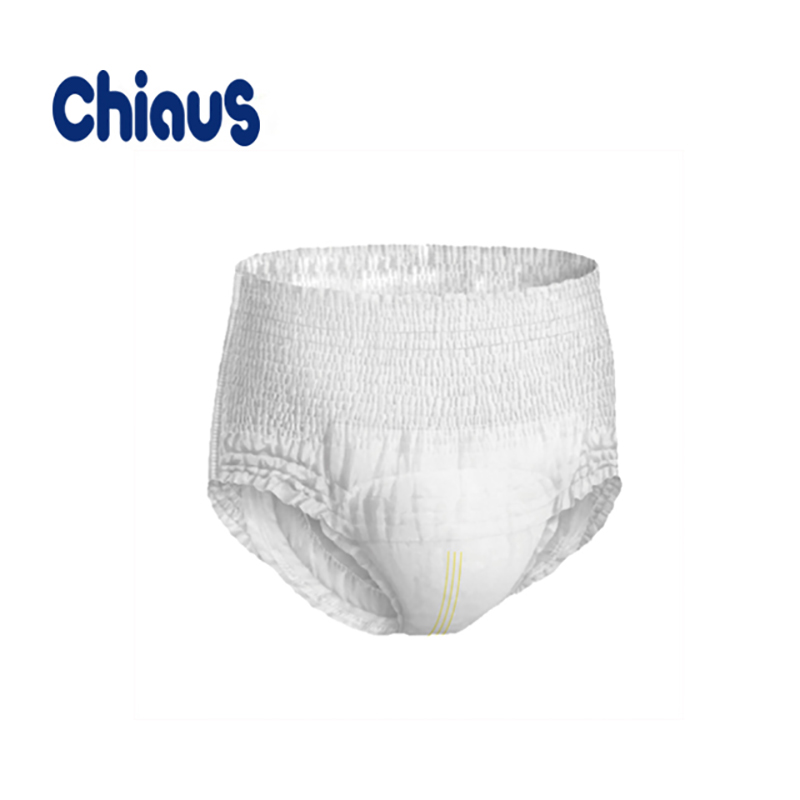Diaper dermatitis, known as diaper rash, is common among babies and adults who wear diapers. About 50% to 65% of all babies get a diaper rash at some point in their lives, despite their parents' best efforts to prevent it. Treatment involves preventive measures and topical (on the skin) treatments, including:
This article lists diaper rash treatments for mild to severe rashes, alternative therapies, and what to do when treatment doesn’t work. Chiaus B Grade Baby Diapers

Mild diaper rashes begin as pink skin in the diaper area. Moderate rashes get more red but do not include open sores or bleeding. Severe rashes involve red skin that can become raw or cause sores and bleeding.
Mild diaper rashes typically clear up within two to three days (or less) with the following methods.
Change the diaper frequently, allowing the skin to air dry for a few minutes (or as long as possible) before putting on a fresh diaper.
Use breathable and loose-fitting diapers, and avoid plastic diaper covers. Doing so allows for air circulation and prevents rubbing against the skin. If you typically use cloth diapers, consider using disposable diapers until the rash heals.
Breathable diaper fabrics have tiny pores that allow air movement. Studies show that breathable diapers decrease the risk of diaper rash by 50% in babies and 62% in adults.
Certain dyes, fragrances, and chemicals can be irritants or allergens. Products that may contain irritants include wipes, soaps, diapers, lotions, and laundry detergents. Try to use mild products that are free of alcohol, fragrance, and dye.
A diaper ointment, cream, or paste protects the skin from moisture, irritation, and infection by creating a barrier.
The brand is less important than the ingredients. Look for fragrance-free products with zinc oxide (an antioxidant that provides a barrier to water and infection) or petroleum jelly.
Diaper rash ointments typically include petrolatum. They are best for everyday use, prevention, or mild rashes. Examples include:
While adults can use baby products, they can also use the following petrolatum products for adults:
For moderate diaper rashes, consider Aquaphor advanced therapy ointment.
Diaper rash creams contain zinc oxide and are good for prevention. They also treat mild to moderate rashes, typically within two to three days. Examples of products with zinc oxide include:
The following treatment application tips may also help diaper rashes heal more quickly:
Diaper rash paste can help moderate to severe diaper rashes heal quickly. However, these are very thick and are not typically the best everyday option. Examples include:
Hydrocortisone (steroid) cream can be helpful for adults when irritants or allergens cause persistent redness, inflammation, or itching.
You can apply a mild (0.5% to 1%) over-the-counter (OTC) hydrocortisone cream twice a day for three to five days, up to a maximum of two weeks.
Consult a healthcare provider before using hydrocortisone on babies.
While babies frequently get rashes from irritants, yeast accounts for 63% of diaper rashes in adults (average age 85). Yeast-related rash risk increases after taking antibiotics.
Characteristics of a yeast rash include:
In this case, you can try an over-the-counter (OTC) anti-fungal cream such as:
When you apply these medications to a yeast rash at least twice daily for seven to 10 days, the cure rate is 50% to 68%.
Many people add OTC antibiotic creams or ointments to diaper rash cream. While this could help with some rashes, consult a healthcare professional before trying an antibiotic cream.
You can try natural or alternative options to prevent and treat mild diaper rashes.
Soak the affected area in warm water for 10–15 minutes several times daily. Add colloidal oatmeal or a couple of tablespoons of baking soda to the bathwater for added relief. Some people also use colloidal oatmeal in balms or creams.
Many people make their own diaper rash creams or balms with natural ingredients. If you are looking for a recipe, consider including the following topical ingredients:
There are also commercially available brands that make natural products, including:
Witch hazel (winter bloom) is a flowering plant. You can get distilled liquid (from the leaves, twigs, and bark of witch hazel) at almost any retail store. Research shows this is an effective treatment for diaper rash and skin inflammation.
Bentonite clay (sodium bentonite) is a gray clay with a fine texture. It’s readily available at health food stores. Mix it with distilled water for skin application alone or in a balm, soap, or shampoo. One study shows that 88% of rashes started clearing after six hours of applying a bentonite cream.
Calendula is an extract of marigold that has skin-healing properties. Research shows that 54% of rashes started clearing after six hours of applying a calendula cream.
For centuries, people have used breast milk to treat, soothe, and soften skin. It contains multiple vitamins, protein, calcium, lactic acid, and antibodies (to help fight infection). You can apply breast milk directly to the rash or use it to make a cream or balm.
One study shows that applying a mixture of plain yogurt and honey for seven to ten days may be helpful for some yeast rashes. However, they note that Lotrimin (clotrimazole) was more effective in comparison.
The most essential step in treating diaper rash is to keep the area clean and dry. Change the diaper frequently, at least every two to three hours.
The reasons diapers that are left too long can lead to diaper rashes include:
You can clean the area using a gentle wipe or soft cloth for diaper rash prevention or mild diaper rashes. Be sure to pat the skin dry rather than rubbing it.
For moderate to severe rashes, cleaning the area through bathing, splashing water, or using a squirt bottle with warm water is best. These methods are gentler than a cloth or wipe.
It’s also important to wash your hands before and after diaper changes to prevent the spread of germs. If you use cloth diapers, wash them in hot water to prevent the growth of bacteria or fungi.
You can refer to the letters "ABCD" to recall these diaper rash prevention and treatment measures:
When irritation or moisture cause a mild diaper rash, it can heal quickly (within 12 hours to a day) using the steps above.
Moderate rashes may take two to three days. If a rash lasts over three days despite treatment, consult with a healthcare provider.
Severe rashes can take a couple of weeks or longer to heal. Timing depends on the underlying cause and the type of medical intervention.
If the rash does not clear within three days of using the tips above or if it worsens, contact a healthcare provider.
Depending on the underlying cause, the healthcare provider may suggest diagnostic tests and a prescription-strength antibiotic, antifungal, or steroid cream.
Signs that you should call a healthcare provider include:
Speak with a healthcare professional before trying a new product on a baby.
Mild to moderate diaper rashes typically clear within three days of preventive methods and treatment. Prevention and treatment include keeping the area clean and dry, using breathable diapers, and avoiding irritants. There are various OTC diaper rash treatments for babies and adults. Some are better for prevention, while others treat mild to moderate diaper rashes.
Fragrance-free products with zinc oxide or petroleum jelly are good choices. You can also use natural products and control ingredients by making a balm (or using breast milk) to treat the rash. Notify a healthcare provider if the rash persists or worsens after three days.
Horii KA. Diaper dermatitis. In: Levy ML, Drutz JE, Corona R (Eds). UpToDate (Internet). UpToDate Publishing;2023.
Nemours Kids Health. Diaper rash (for parents).
Blume-Peytavi U, Kanti V. Prevention and treatment of diaper dermatitis. Pediatr Dermatol. 2018;35(1):s19- s23. doi:10.1111/pde.13495
Seattle Children’s Hospital. Diaper rash.
Horii KA. Patient education: Diaper rash in infants and children (Beyond the basics). In: Levy ML, Drutz JE, Corona R (Eds). UpToDate (Internet). UpToDate Publishing;2023.
American Academy of Pediatrics. Common diaper rashes. Healthychildren.org.
Bonifaz A, Rojas R, Tirado-Sánchez A. et al.Superficial mycoses associated with diaper dermatitis.Mycopathology.2016;181:671–679.doi:10.1007/s11046-016-0020-9
Hebert AA. A new therapeutic horizon in diaper dermatitis: Novel agents with novel action. International Journal of Women's Dermatology. 2021;7(4):466-470. doi:10.1016/j.ijwd.2021.02.003
National Association for Continence. How to prevent and treat adult diaper rash.
American Academy of Dermatology Association (AAD). How to treat diaper rash.
Mahmoudi Adib-Hajbaghery M, Mashaiekhi M. Comparing the effects of Bentonite & Calendula on the improvement of infantile diaper dermatitis: A randomized controlled trial. The Indian Journal of Medical Research. 2015;142(6):742–746. doi:10.4103/0971-5916.174567
Taudorf EH, Jemec GBE, Hay RJ, Saunte DML. Cutaneous candidiasis - an evidence-based review of topical and systemic treatments to inform clinical practice. J Eur Acad Dermatol Venereol. 2019;33(10):1863-1873. doi:10.1111/jdv.15782
Sobhan M, Hojati M, Vafaie SY, Ahmadimoghaddam D, Mohammadi Y, Mehrpooya M. The efficacy of colloidal oatmeal cream 1% as add-on therapy in the management of chronic irritant hand eczema: A double-blind study. Clin Cosmet Investig Dermatol. 2020;13:241-251. doi: 10.2147/CCID.S246021
Madhu R, Chandran V, Anandan V. et al. Indian Academy of Pediatrics guidelines for pediatric skin care. Indian Pediatr. 2021;58:153–161). doi:10.1007/s13312-021-2133-6
Colantonio S, Rivers JK. Botanicals with dermatologic properties derived from first nations healing: Part 2-plants and algae. Journal Of Cutaneous Medicine And Surgery. 2017;21(4):299–307. doi:10.1177/1203475416683390
Darvishi M, Jahdi F, Hamzehgardeshi Z, Goodarzi S, Vahedi M. The comparison of vaginal cream of mixing yogurt, honey and clotrimazole on symptoms of vaginal candidiasis. Global Journal of Health Science. 2015;7(6):108-116.
Seifi B, Jalali S, Heidari M. Assessment effect of breast milk on diaper dermatitis. Dermatol Reports. 2017;9(1):7044. doi: 10.4081/dr.2017.7044
Koudounas S, Bader DL, Voegeli D. An exploratory study of the effects of the ph of synthetic urine on skin integrity in healthy participants. Skin Pharmacology and Physiology. 2022;35(3):166-173. doi:10.1159/000522289
American Academy of Dermatology Association (AAD). How to treat diaper rash.
American Academy of Pediatrics. Common diaper rashes. Healthychildren.org.
Blume-Peytavi U, Kanti V. Prevention and treatment of diaper dermatitis. Pediatr Dermatol. 2018;35(1):s19- s23. doi:10.1111/pde.13495
Hebert AA. A new therapeutic horizon in diaper dermatitis: Novel agents with novel action. International Journal of Women's Dermatology. 2021;7(4):466-470. doi:10.1016/j.ijwd.2021.02.003
Horii KA. Diaper dermatitis. In: Levy ML, Drutz JE, Corona R (Eds). UpToDate (Internet). UpToDate Publishing;2023.
By Brandi Jones, MSN-ED RN-BC Brandi is a nurse and the owner of Brandi Jones LLC. She specializes in health and wellness writing including blogs, articles, and education.
Thank you, {{form.email}}, for signing up.
There was an error. Please try again.

Cloth Diapers For Adults By clicking “Accept All Cookies”, you agree to the storing of cookies on your device to enhance site navigation, analyze site usage, and assist in our marketing efforts.